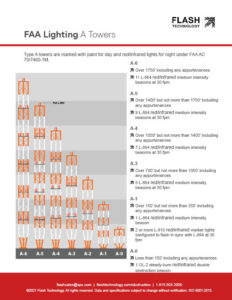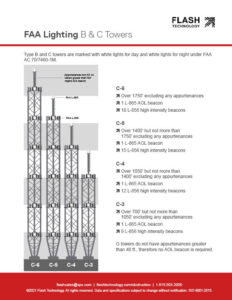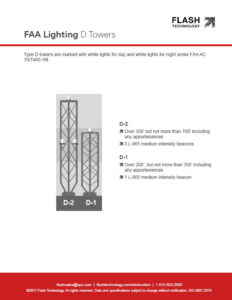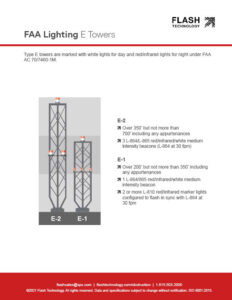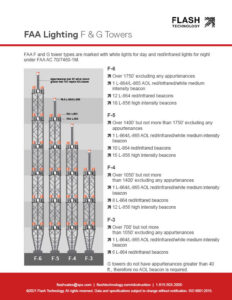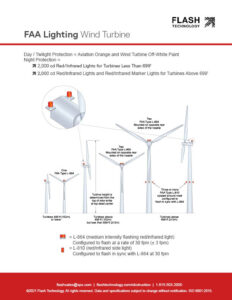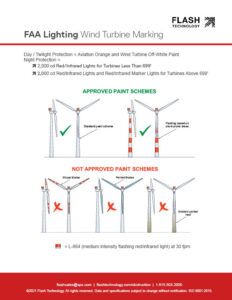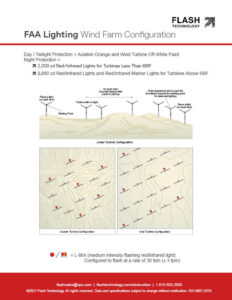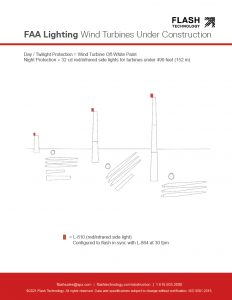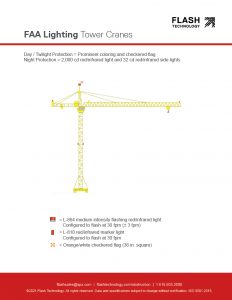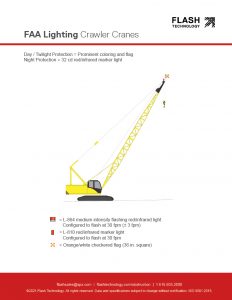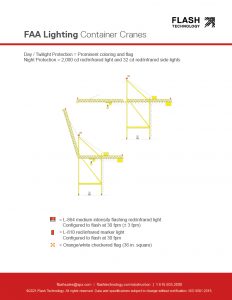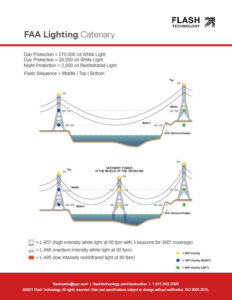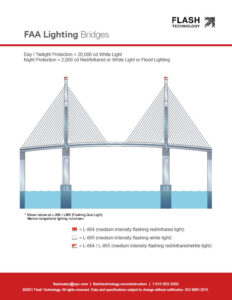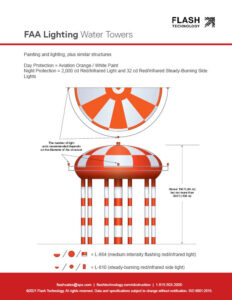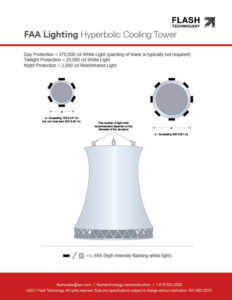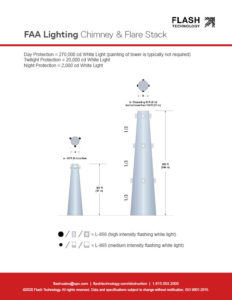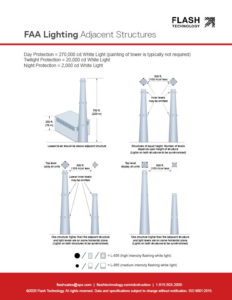To ensure airspace navigation safety, federal agencies also regulate tower monitoring, lighting inspection and failure notifications.
Monitoring
- Visually inspect every 24 hours unless automated monitoring is in place.
- Inaccessible structures should employ automated monitoring that registers and reports any malfunction.
- Remote monitoring should confirm communication and operational status every 24 hours.
- Maintain a daily operations log regardless of inspection method.
Inspection
- Voltage to the lamp filament should not vary more than 3% +/- of the rated voltage. Strobes should be within 10% of rated voltage.
- Replace lamps at 75% of their rated life or immediately upon failure.
- Replace flashtubes immediately upon failure, when peak intensity falls below specifications, the fixture skips flashes or at the manufacturer’s recommended intervals.
- Visually inspect lenses every 24 months or when the light fixture fails. Replace if serious cracks, hazing, dirt buildup, etc. has occurred.
Light Failure Reporting
A NOTAM (Notice to Airmen) is required for any failure lasting more than 30 minutes and affecting a top light or flashing obstruction light. NOTAMs should include:
- Name of persons or organizations reporting the failure, including contact information
- Structure type, height and location (including coordinates)
- Return to service date
- FCC registration number (if applicable)


